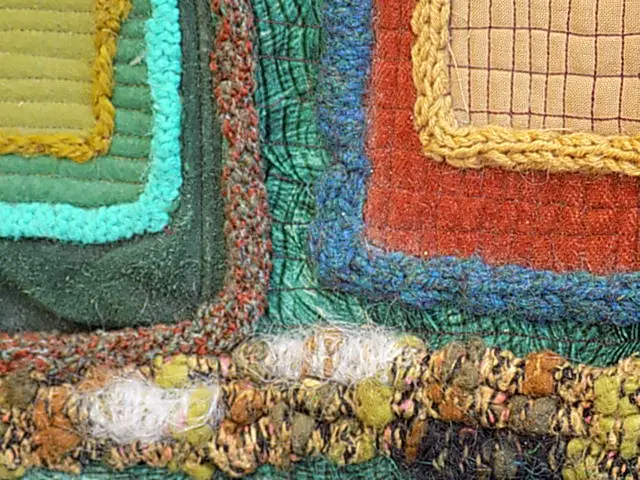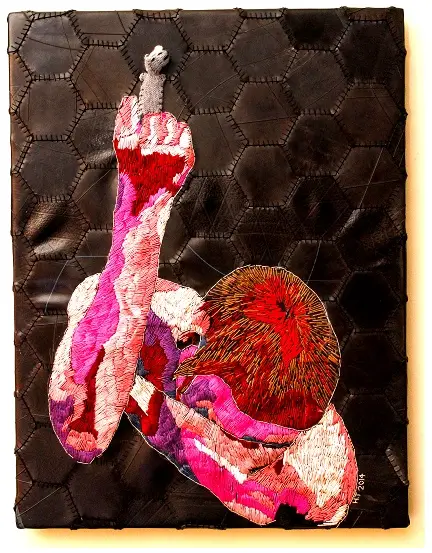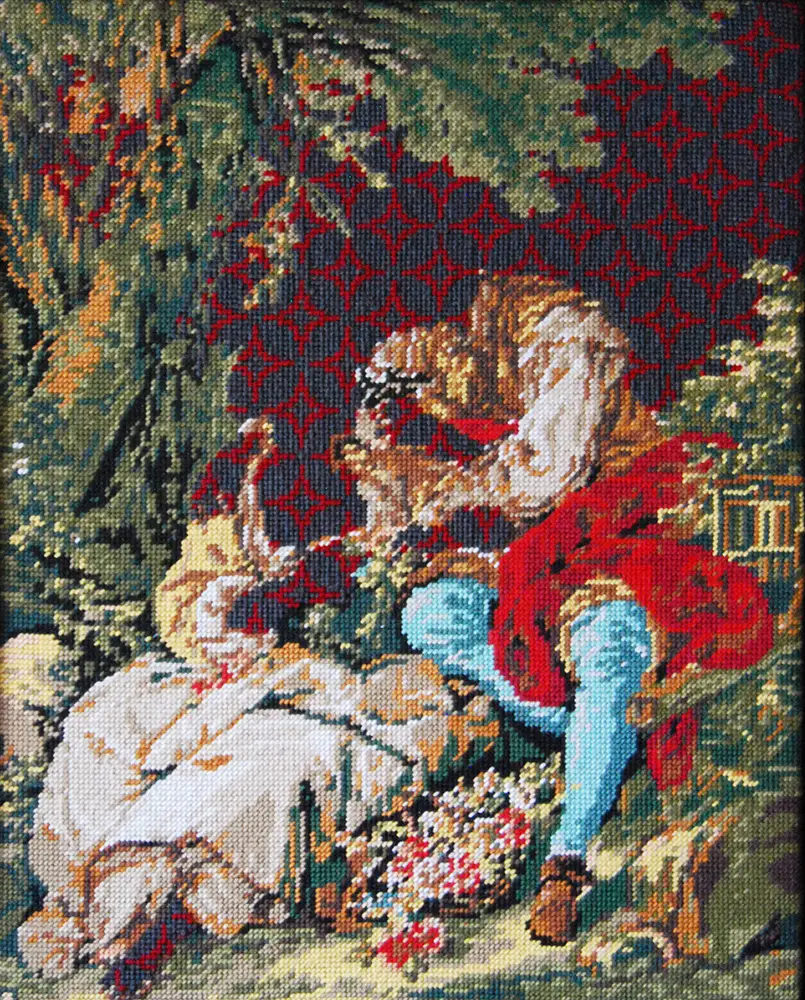
Using Wool To Embellish Textile Art
In it’s natural form fleece is coarse and dense with an oily texture. The flower heads in ‘Abstract Flower Design C’ were created using fleece collected from the Yorkshire Moors. I removed debris and washed it in a mild detergent, pulling and teasing to create a workable structure.
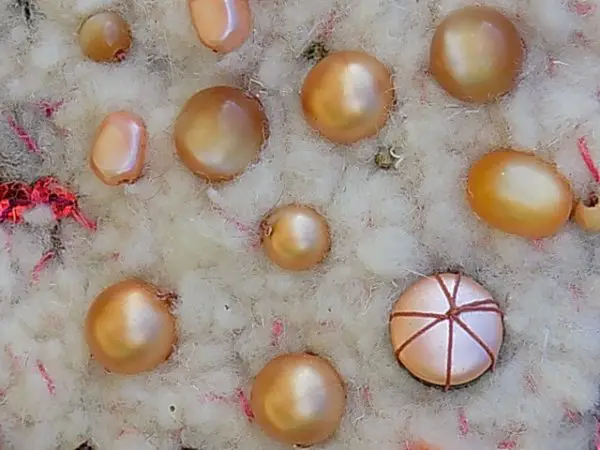
Using Wool To Create Textile Art
I love to recycle materials in my work. The textile body of ‘Cancer 2: Mastectomy’ was created from the lining of an old sofa with the degraded structure capturing beautifully an expression of strength and fragility.
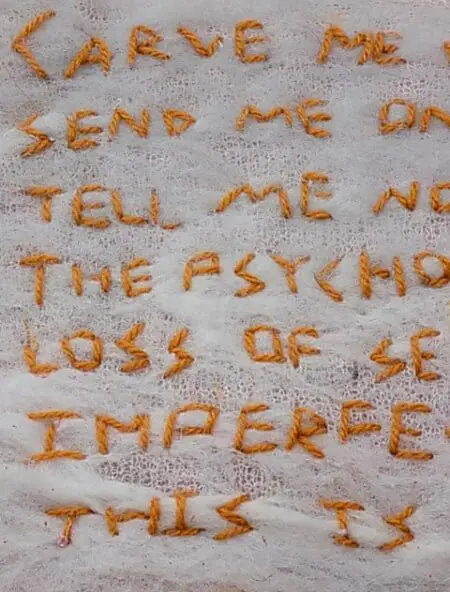
Using Wool To Embellish Textile Art
Cloth, blankets and jumpers provide a dense structure effective in surface contouring. The process of layering can create real depth within a flat design. ‘Fur Pocket’ offers a contrast between the thick bouncy structure of a natural fleece and the density of manufactured products.
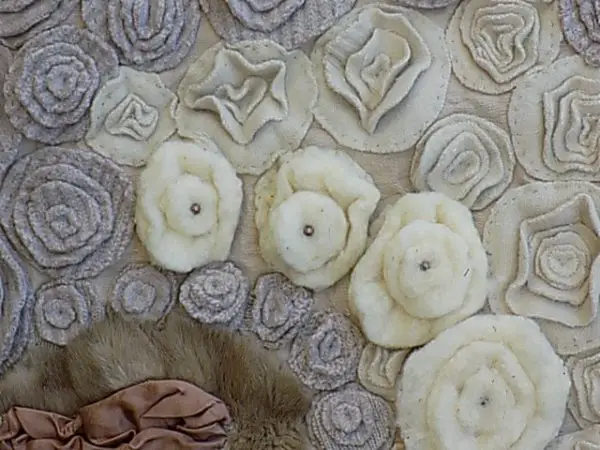
In contrast to a dense structure open weave knits are effective as overlays to add depth and contouring. The caramel mohair in ‘Old Ted’ captures the essence of time, pulled and knotted to express the wear and tear of a beloved childhood teddy bear.

Fringing
The thickness and texture of commercial wool varies greatly. Mohair is a favourite because it is light and versatile. I loved making wool pompoms as a child and use them in my work to create mobile fringes. The application of layering creates volume and natural movement. A great way to build seasonal colour. ‘Springtime’ has an immense fringe.
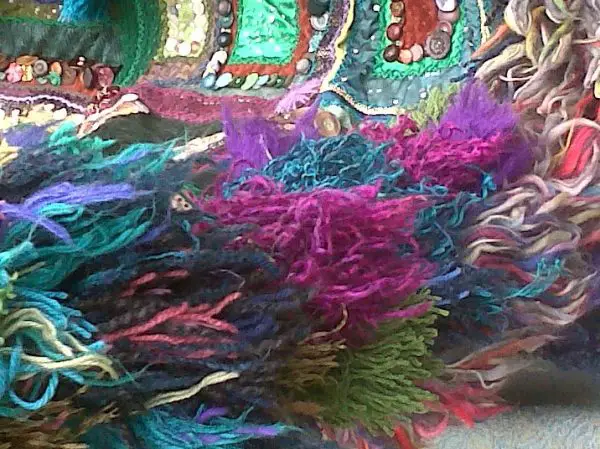
Plaits, knots and tassels are used to create volume and depth within the beard of ‘Jesus 1’
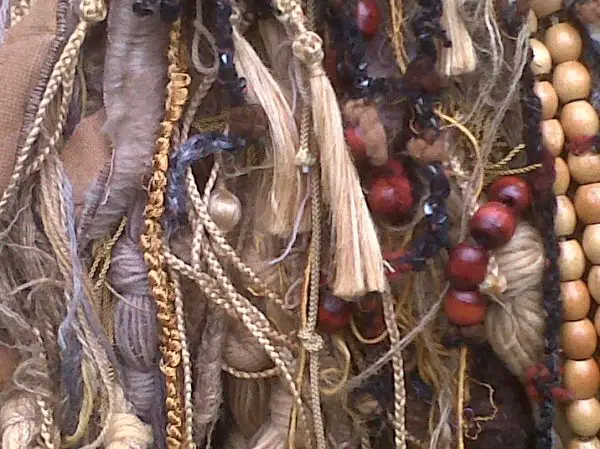
Techniques
French knitting with a bobbin is another favourite from childhood. I used this method in ‘Autumnal 1’ to embellish edges, raising the surface depth, adding a variety of texture.
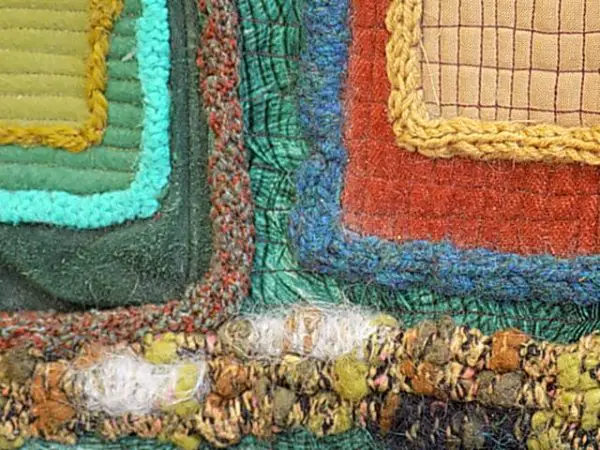
French knots provide effective detail in ‘Summertime’
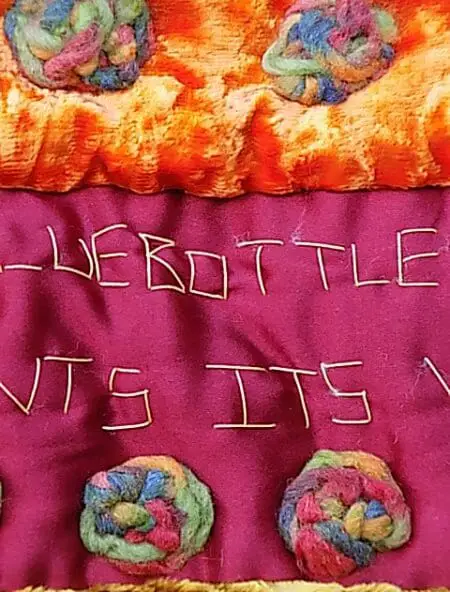
In contrast a thin ply creates less density and is more pliable. Effective in embellishing surfaces with mark making, adding colour and narrative.
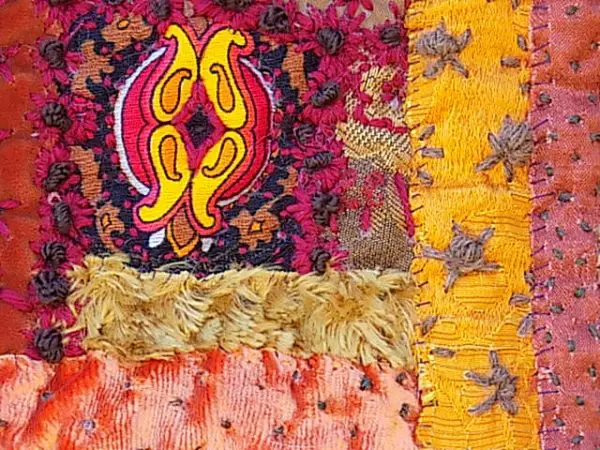
Loops give effective detail to abstract flowers in ‘Angel Wings’
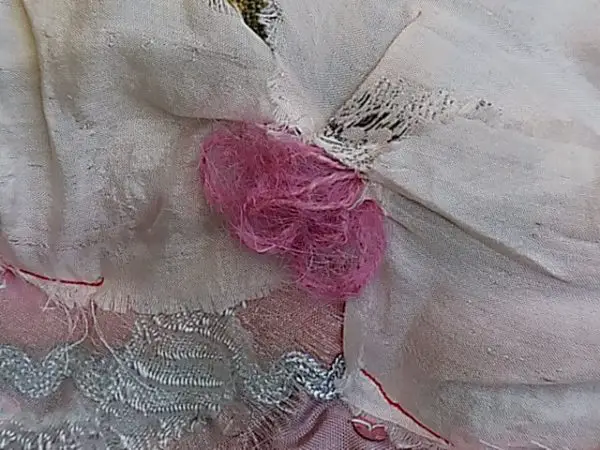
Hand Embroidery
Original poetry provides an emotional layering to textiles, capturing the essence of a subject, and is hand embroidered in both wool and silk threads. Note the contrast between the two in ‘The Poor Laws: These are the Things’. The thicker the wool the larger the lettering needs to be, producing a bold statement.
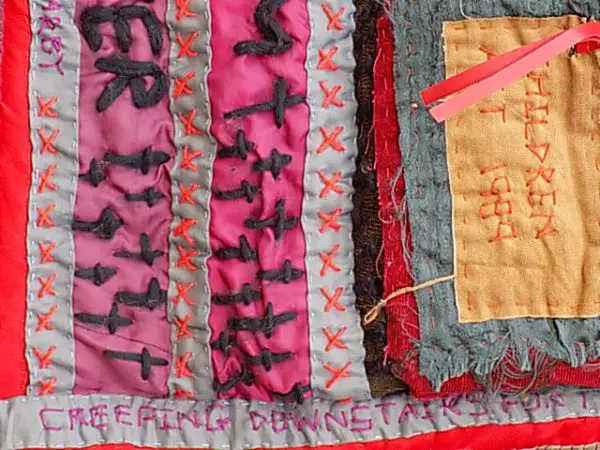
I hope you have enjoyed Using Wool To Embellish Textile Art. Visit my website for more examples by CHRISTINE CUNNINGHAM.

